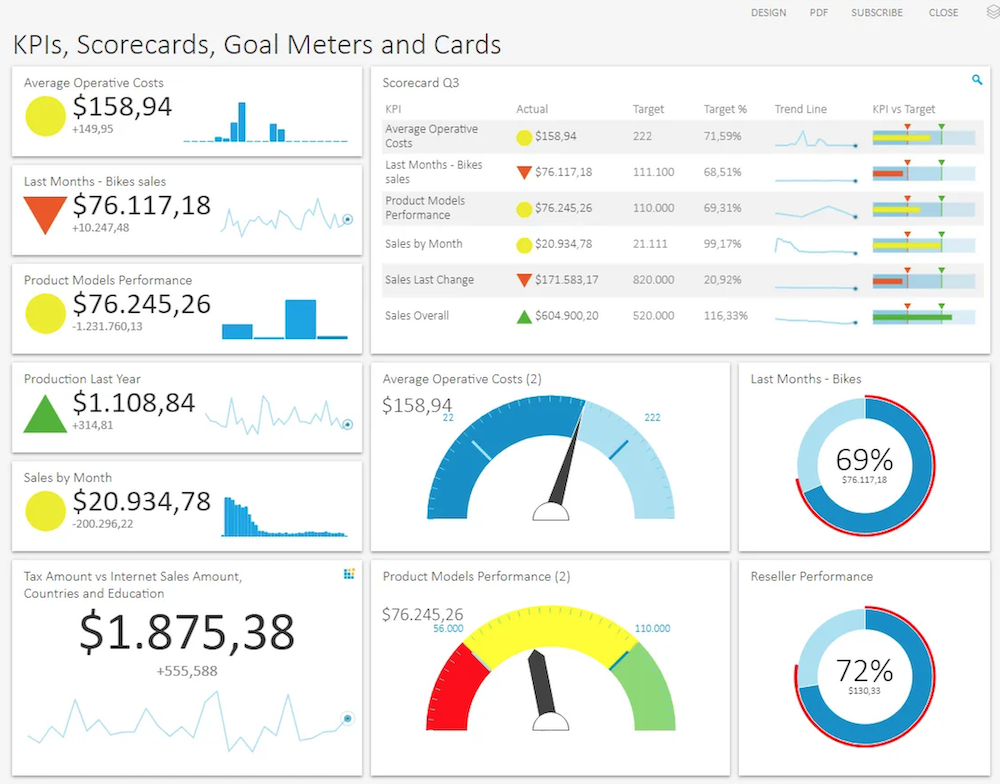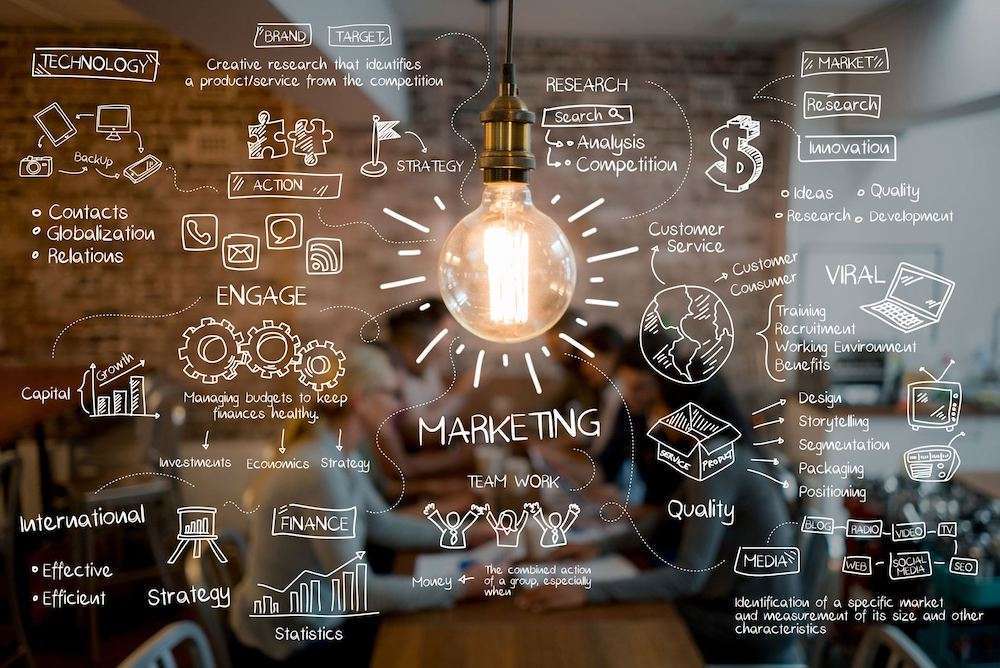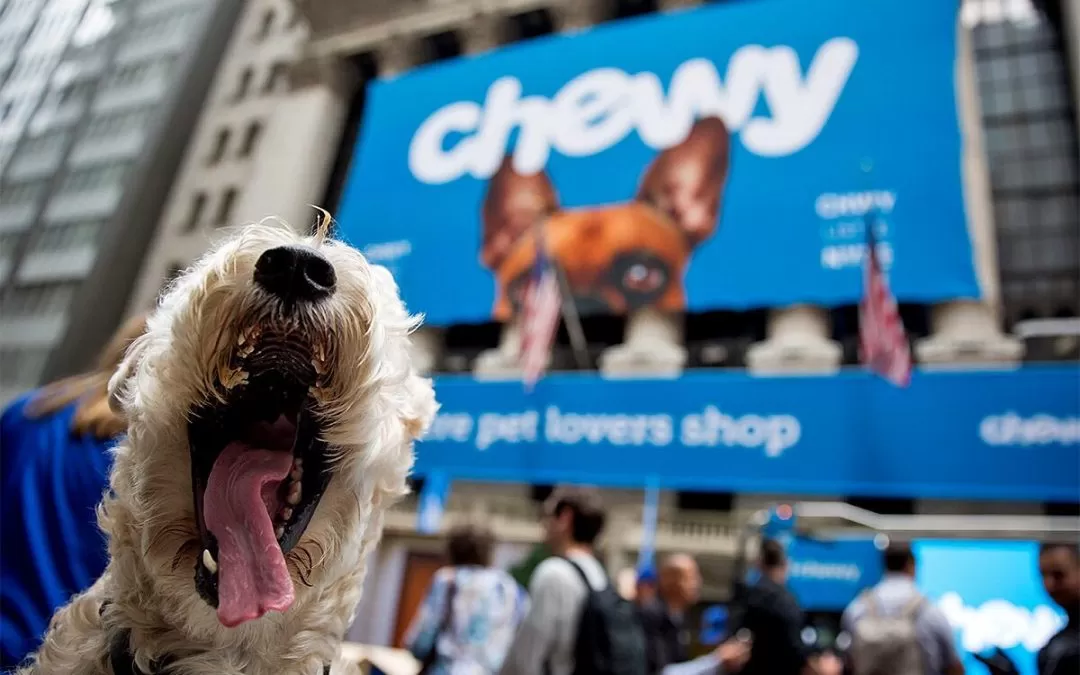The marketing world is dynamic and ever-changing. The latest trends, technologies, and tactics are never stagnant. Keeping an eye on the newest marketing statistics is critical to stay ahead. Staying on top of the latest numbers is a vital way to ensure the success of any business. Whether you’re focused on SEO, content marketing, advertising, or marketing technology, these are the stats you need to connect with your customers, reach your target audience, and boost conversions.
Search Engine Optimisation Statistics
Conversion Rate Optimisation (CRO)
i. More than one in three marketing leaders cite conversion rates as a top KPI that they prioritise tracking (HubSpot State of Marketing Report, 2023).
ii. Nearly two out of three marketers report that their average landing page conversion rate is less than 10%
iii. The average website has a bounce rate of 37% and an SEO click-through rate of 13% (HubSpot, 2023).
iv. 70% of marketers believe that A/B testing is essential to boost conversion rates (ZipDo Essential A/B Testing Statistics, 2023).
v. The average conversion rate across all ecommerce sites is under 2% (Statista, 2023).
vi. Conversion rates are highest for health and beauty online shopping at 2.7% and lowest for luxury handbags at just 0.4% (Statista, 2023).
vii. Email marketing is one of the most effective channels for driving conversions, with a 2.8% conversion rate for B2C brands and a 2.4% conversion rate for B2Bs (FirstPageSage, 2023).
Mobile Search
i. Younger users prefer mobile search to desktop, with 80% of Gen Z and 62% of millennials reporting primarily using mobile search (HubSpot, 2023).
ii. Most marketers report that mobile devices are responsible for more than half of their annual traffic (HubSpot, 2023).
iii. The average U.S. household had 22 connected devices in 2022 (Deloitte, 2022).
iv. Google accounts for over 95% of global mobile search market share (StatCounter, 2023).
v. Mobile advertising spending is projected to reach nearly $400 billion by 2024 (Statista, 2023).
Organic Search
i. 75% of marketers believe that AI-enabled search engines will positively impact their blogs, and 68% predict that their site will get more traffic. (HubSpot, 2023)
ii. Only 9% believe this will harm blog traffic (HubSpot, 2023).
iii. 39% of marketers list optimising on-page content based on keywords as their top SEO strategy (HubSpot, 2023).
iv. 80% of Gen Z, 62% of millennials, 66% of Gen X, 35% of Boomers, and 52% of the general population primarily use mobile search (HubSpot, 2023).
v. 29% of marketers list SEO as a top trend they leverage (HubSpot, 2023).
Voice Search
i. 13% of marketers are leveraging voice search optimisation (Alexa, Siri, etc.) as part of their marketing strategy. (Source: Hubspot.)
ii. In the U.S., 41% of adults use voice search daily (TechReport, 2023).
iii. About 90% of people think voice search is easier and faster than traditional search (TechReport, 2023).
iv. Over one in three Americans owns a smart speaker (Edison Research, 2023).
v. Amazon leads the smart speaker market, accounting for 67% of U.S. market share (Statista, 2023).
Ecommerce
i. Smartphones account for over 70% of retail website visits worldwide (Statista, 2023).
ii. Ecommerce accounts for over 20% of all global retail sales (Statista, 2023).
iii. Amazon is the top ecommerce platform in traffic, but Alibaba’s Taobao and Tmall lead in gross merchandise value (Statista, 2023). (Source: Hubspot, 2023)
iv. Hyper-personalisation is the fastest-growing discipline in ecommerce marketing (McKinsey 2024).
v. Hyper-personalisation delivers the highest ROI in ecommerce marketing (Gartner, 2024).
vii. Lack of relevancy, (delivered by hyper-personalisation) 82% cause of consumers being attracted to an alternate site (SwiftERM, 2023).

Content Marketing Statistics
Blogging
i. Blogging Blog posts are the most famous content format, with 9 out of 10 marketers using their blogs to achieve their content goals (SEMrush, 2023).
ii. Companies with blogs produce an average of 67% more leads per month than companies that don’t have active blogs (DemandMetric, 2023).
iii. 43% of content marketers report using AI to help them generate ideas (43%), but just 3% use it to write entire articles (Orbit Media, 2023).
iv. The average blog post length is 1,427 words — more than 70% longer than ten years ago (Orbit Media, 2023).
v. Only 3% of brands regularly publish blog posts longer than 2,000 words (Orbit Media, 2023).
Video
i. Short-form video is the top leveraged media format in marketers’ content strategies. (HubSpot, 2024)
ii. 91% of businesses use video as a marketing tool in 2023. (Wyzowl, 2023)
iii. 42% of video marketers say they spend between $0 and $500 on an average video. (Wyzowl, 2023)
iv. YouTube is the most widely used video marketing platform. (Wyzowl, 2023)
v. Short-form video is the top trend marketers report leveraging in 2023 (HubSpot, 2023).
vi. 8% of marketing videos average less than 10,000 views, 16% average under 1,000 views, and 16% average over 100,000 views (HubSpot, 2023).
vii. 60% of video marketers list engagement rate as a top KPI, followed by conversion rate (56%) and click-through rate (52%) (HubSpot, 2023).
viii. 96% of marketers agree that the optimal length of a marketing video is under 10 minutes. (HubSpot, 2023)
ix. 36% of video marketers believe that the optimal length for a marketing video is between one and three minutes, 27% say the optimal length is four to six minutes, and 15% say it’s seven to nine (HubSpot, 2023).
Content Strategy
i. 29% of marketers actively use content marketing. (HubSpot, 2024)
ii. Over 41% of marketers measure the success of their content marketing strategy through sales. (HubSpot, 2024)
iii. Web traffic is among the top two most common measurements of success for content marketing strategies. (HubSpot, 2024)
iv. 50% of marketers plan on increasing their investment in content marketing in 2024. (HubSpot, 2024)
v. One in two writers use AI tools to boost the performance of their content (HubSpot, 2023).
vi. 48% of social media marketers share similar or repurposed content across platforms with minor moderations or adaptations. In comparison, 34% make unique content from scratch for each platform, and 17% share the same content across platforms (HubSpot, 2023).
vii. 13% of marketing leaders report that content strategy is their top challenge (HubSpot, 2023).
viii. One in three media planners report that using content to engage with their audiences is a top strategic goal (HubSpot, 2023).
Audio
i. 25% of marketers leverage podcasts or other audio content as part of their content strategy. (HubSpot, 2024)
ii. 47% of marketers who leverage audio content and podcasts plan to invest more budget in 2024. (HubSpot, 2024)
iii. Only 3% of marketers say they’ve used audio chat rooms like Clubhouse in their marketing role. (HubSpot, 2024)
iv. Ad spending in the digital audio advertising market is projected to reach more than $10 billion in 2023 and $13 billion in 2028 (Statista, 2023).
v. More than 60% of digital audio listeners in the U.S. paid for a streaming audio subscription in 2022 (Insider Intelligence, 2023).
vi. 86% of consumers recall podcast ads more than any other channel (Basis Technologies, 2023).
vii. 53% of people who own a smart speaker and have heard an ad on their device say they will likely respond to it (Basis Technologies, 2023).
viii. 61% of audio listeners pay attention to audio ads (compared to just 19% of TV watchers who actively watch TV ads) (Basis Technologies, 2023).
ix. Ad spending in the digital audio advertising market is projected to reach more than $10 billion in 2023 and $13 billion in 2028 (Statista, 2023).
x. More than 60% of digital audio listeners in the U.S. paid for a streaming audio subscription in 2022 (Insider Intelligence, 2023).
xii. 86% of consumers recall podcast ads more than any other channel (Basis Technologies, 2023).
xiii. 53% of people who own a smart speaker and have heard an ad on their device say they will likely respond to it (Basis Technologies, 2023).
xix. 61% of audio listeners pay attention to audio ads (compared to just 19% of TV watchers who actively watch TV ads) (Basis Technologies, 2023).
Social Media Statistics
With billions of people on social media globally, understanding how to market on various platforms has become integral to every business’s success. The social media marketing statistics below will give you insight into how marketers today successfully expand their reach, boost brand awareness, and promote their products and services through these platforms — and empower you to do the same.
i. Facebook is the most popular social media platform marketers used in 2023, and marketers report that it has a better ROI than every other platform (HubSpot, 2023).
ii. Facebook has over 3 billion monthly active users and is the most-used social network worldwide (Statista, 2023).
iii. One in four marketers list Facebook as one of the most effective platforms for building community on social media (HubSpot, 2023).
i. Instagram has 2 billion monthly active users globally (Backlinko, 2023).
ii. Instagram posts generate 23% more engagement than Facebook, even though Facebook has twice as many monthly users (HubSpot, 2023).
iii. In 2023, 22% of Instagram users watched branded content Stories from a company, business, or brand more than once a week, and 36% liked, commented, or shared branded Stories (HubSpot, 2023).
iv. Instagram Live has the highest ROI of any Instagram content format and is the most effective for gaining followers and shares (HubSpot, 2023).
X (Formerly Twitter)
i. X has over 500 million monthly active users worldwide (Search Logistics, 2023).
ii. 66% of marketers reported that they would keep their brand on X in 2023, but 71% said they spent less time working on the platform in 2023 than in previous years, and 67% planned to invest in X alternatives (HubSpot, 2023).
iii. X is the 12th most popular social media platform (Statista, 2023).
i. LinkedIn has over a billion members across 200 countries and regions (LinkedIn, 2023).
ii. Over half of LinkedIn’s users are between 25 and 34 (Hootsuite, 2023).
iii. 40% of B2B marketers list LinkedIn as the most effective channel for driving high-quality leads (Sprout Social, 2023).
iv. 89% of B2B marketers use LinkedIn for lead generation, and 62% say it produces leads for them effectively (Sprout Social, 2023).
i. Pinterest has more than 450 million monthly active users (Pinterest, 2023).
ii. 85% of Pinterest’s weekly users have purchased the platform (Pinterest, 2023).
iii. Over three in four Pinterest users are women (Statista, 2023).
iv. 45% of people in the U.S. with a household income of over $100,000 are on Pinterest (Hootsuite, 2023).
v. 97% of top searches on Pinterest are unbranded (Pinterest, 2023).
Snapchat
i. Snapchat has over 400 daily active users worldwide (Statista, 2023).
ii. Snapchat users create over 5 billion daily snaps (Snapchat, 2023).
iii. Snapchat users spend an average of 30 minutes daily on the platform (The Social Shepherd, 2023).
iv. 48% of Snapchat users are aged 15-25 (The Social Shepherd, 2023).
Social Media Management
i. 90% of social media marketers say building an active online community is crucial to a successful social media strategy (HubSpot, 2023).
ii. Social media is the most preferred product discovery platform for consumers aged 18 to 44 (HubSpot, 2023).
iii. 80% of social media marketers believe consumers will buy products directly in social apps more often than on brands’ websites or third-party websites like Amazon (HubSpot, 2023).
iv. 66% of social media marketers report that funny content is the most effective for their brand, followed by relatable content (63%) and trendy content (59%) (HubSpot, 2023).
v. Marketers report that their biggest social media challenge is determining which platforms to invest in (HubSpot, 2023).
Visual Content
i. 26% of marketers are already using infographics while 15% plan to leverage it for the first time in 2024. (HubSpot, 2024).
ii. 21% of marketers list using visual content to boost dwell time as a top SEO marketing strategy (HubSpot, 2023).
iii. Infographics are 30 times more likely to be read than a written article, and they can increase website traffic by up to 12% (DemandSage, 2023).
iv. 55% of marketers create social media infographics more than any other visual media (DemandSage, 2023).
v. 43% of marketers say that creating consistently high-quality visual content is one of the biggest hurdles they face (DemandSage, 2023).
Social Media Usage
i. The number of global social media users is expected to reach 5.1 billion in 2025. (Statista, 2023)
ii. TikTok is the most downloaded non-gaming app in the world with over 627 million downloads. (Business of Apps, 2023)
iii. About 60% of the world’s population uses social media (DataReportal, 2023).
iv. The average social media user spends 2 hours and 24 minutes on social media every day (DataReportal, 2023).
v. More than 90% of working professionals aged 16 to 24 use social media for work-related communication, while less than two-thirds of professionals aged 55 to 64 report using social media at work (DataReportal, 2023).
Email Marketing Statistics
Clickthrough Rate
i. The average clickthrough rate for emails sent to Constant Contact customers is 1.40% (Constant Contact, 2023).
ii. The average clickthrough rate of emails sent using hyper-personalised content is 5.6% (Smartinsights, 2024)
iii. Marketers report that segmented emails drive 30% more opens and 50% more clickthroughs than unsegmented ones (HubSpot, 2023).
iv. Marketers using hyper-personalised content relevancy experienced a 20x return than those not using it. (Statista, 2023)
v. Clickthrough rate is the number one metric marketers use to track the success of non-AI email marketing campaigns (HubSpot, 2023).
Email Content
i. 95% of marketers who use generative AI for email creation rate it as “effective,” and 54% rate it as “very effective” (HubSpot, 2023).
ii. 43% of marketers who use generative AI say that it’s most helpful for creating email copy (HubSpot, 2023).
iii. Using customers’ names in email copy is the most common strategy marketers use to personalise their marketing emails (MailJet, 2023).
iv. 47% of email recipients say they open an email based on the subject line alone, and 69% mark an email as spam based on the subject line alone (OptinMonster, 2023).
Email Segmentation
i. Segmented emails drive 30% more opens and 50% more clickthroughs than unsegmented ones (HubSpot, 2023).
ii. 78% of marketers (that haven’t yet adopted AI hyper personalisation) report that subscriber segmentation is the most effective strategy they use for email marketing campaigns (HubSpot, 2023).
iii. 99% of marketers (that have adopted AI hyper-personalisation) report that it outperforms segmentation by as much as 20x. (Forrester, 2023)
iv. 64% of marketers still personalise their emails by segment (Constant Contact, 2023).
Email Usage
i. 59% of Americans say that most emails they receive are not useful to them (Edison Mail, 2023).
ii. Receiving too many irrelevant content emails is the most common reason why consumers unsubscribe (Gartner, 2022).
iii. 40% of email users have at least 50 unread messages in their inboxes (MailButler, 2023).
iv. The number of global email users reached 4.26 billion in 2022 and is projected to grow to 4.73 billion by 2026 (Statista, 2022).
v. 22% of marketers send two or three marketing emails per day, and 21% send daily emails (HubSpot Research, 2023).
vi. Marketers report that their emails achieve the highest engagement rates between 9 AM and noon (HubSpot Research, 2023).
Mobile Email
i. 41% of email views — and 75% of Gmail users’ email views — come from mobile devices (MailButler, 2023).
ii. 35% of email marketers use a mobile-first or mobile-responsive design process. (Litmus, 2023).
Lead Generation Statistics
Demand Generation
i. 70% of marketers would rate their leads as being “high quality.” (HubSpot, 2024)
ii. Lead generation is the 3rd most important metric used when measuring the effectiveness of content marketing strategies. (HubSpot, 2024)
iii. 44% of marketers say “Better measure the ROI of our demand generation initiatives” is their top priority for 2021. (Demand Gen Report, 2021)
iv. More than half (53%) of marketers say webinars are the top-of-the-funnel format that generates the most high-quality leads. (Demand Gen Report, 2021)
v. 53% of marketers say email has been the most effective channel for early-stage lead generation.(Demand Gen Report, 2021)
vi. In 2021, 78% of marketers say their demand-gen budget will grow or remain the same. (Activate, 2020)
vii. 28% of marketers say using additional account-level fields helps improve their lead scoring. (Activate, 2020)
viii. Ad placement and audience targeting are the top ways that advertisers drive more demand. (HubSpot, 2020)
ix. The top priority for marketers is generating leads. (HubSpot, 2020)
x. Over 60% of marketers said their CAC has increased in the past three years. (HubSpot, 2020)
xi. 49% of companies report that increasing customer acquisition is their primary objective. (Ascend2, 2020)
Marketing Automation
i. 64% of marketers use AI/automation and 38% of those who don’t will start using it in 2024. (HubSpot, 2024)
ii. 63% of marketing leaders report that they use automation in their email marketing efforts, 50% use it for social media management, and 40% automate their paid ads efforts (Statista, 2023).
iii. 91% of marketers reported that demand for automation from their business teams increased between 2020 and 2022 (Salesforce, 2022).
iv. More than three-quarters of customer journeys are somewhat automated, and 10% are fully automated (Ascend2, 2023).
v. Marketers using AI autonomous solutions have the highest ROI of their marketing budget by the elimination of the cost of staff to operate it. (SwiftERM, 2024)
Marketing Analytics
i. A majority of marketers say that data is only “somewhat” important to their overall marketing strategies. (HubSpot, 2024)
ii. A majority of marketers say that the data they have about their target audiences is high quality (44%). (HubSpot, 2024)
iii. Just over half (53%) of marketing decisions are influenced by marketing analytics (Gartner, 2022).
iv. 87% of marketers (not using AI hyper-personalisation) report that data is their company’s most under-utilised asset (Invoca, 2023).
v. 22% of social media marketers list measuring and justifying their work as a top challenge (HubSpot, 2023).
vi. Nearly one in three media planners list understanding the platforms their audiences spend the most time on and better analysing the effectiveness of their content as their top challenges (HubSpot, 2023).
vii. 26% of marketers report that decision-makers do not review the information the marketing analytics team provides, and 24% report that decision-makers reject the marketing analytics team’s recommendations or rely on gut instincts to make decisions (Gartner, 2022).
Advertising Statistics
Adblocking
i. Marketers say that Google’s planned third-party cookie phase-out has had the most impact on their marketing strategy this year. (HubSpot, 2024)
ii. In 2022, 35.7% of global internet users reported using ad blockers to block ads when viewing content online (Statista, 2023).
iii. Ad blocking is most common in China, Indonesia, and Vietnam, where more than 40% of internet users use these tools to block ads (Statista, 2023).
iv. People between 18 and 29 are likelier to use an ad blocker, while younger teens and older groups are less likely to block ads (Kinsta, 2023).
v. Worldwide, there are 530 million mobile ad-block users and 290 million desktop ad-block users (Blockthrough, 2023).
Display Advertising
i. 22% of marketers use display ads as part of their marketing strategy. (HubSpot, 2024)
ii. In 2022, display advertisements accounted for 30% of all digital ad spending in the United States (Statista, 2023).
iii. Nine out of ten dollars spent on display advertising in the United States are allocated using programmatic buying (Statista, 2023).
iv. The retail industry spends the most on display ads, accounting for 24.7% of U.S. display ad spend (Insider Intelligence, 2023).
v. U.S. ecommerce businesses are projected to spend more than $15 billion on display ads in 2026 (Insider Intelligence, 2023).
Mobile Advertising
i. Global mobile advertising spending is expected to exceed $300 billion by 2024 (Statista, 2023).
ii. The U.S. leads the world in mobile ad spending, with an annual spend of over $150 billion (Statista, 2023).
iii. China is the second largest market for mobile advertising, with an annual spend of nearly $115 billion (Statista, 2023).
iv. U.S. marketers report allocating 19% of their marketing budgets to mobile advertising (Statista, 2023).
v. More than half of all global web traffic is mobile, making this an essential platform for advertisers (Statista, 2023).
vi. Most marketers report that mobile devices are responsible for more than half of their annual traffic (HubSpot, 2023).
Pay-Per-Click (PPC)
i. Advertising With effective optimisation, pay-per-click (PPC) advertising can yield average returns of $2 for every $1 spent — a 200% ROI (Wordstream, 2023).
ii. A personalised landing page can make PPC ad campaigns 5% more effective (Ranktracker, 2022).
iii. 84% of brands and marketers said they see good results with their PPC advertising campaigns (Ranktracker, 2022).
Video Advertising
i. Video ad spending is projected to reach over $191 billion in 2024 and more than $240 billion by 2028 (Statista, 2024).
ii. 92% of video marketers report that video advertising provides a good ROI (Wyzowl, 2023).
iii. 91% of businesses report using video as a marketing tool (Wyzowl, 2023).
iv. The video platform TikTok generated $4 billion in advertising revenue in 2022, and its revenue is expected to double by 2024 (Statista, 2023).
Marketing Technology Statistics
Messaging Apps
i. 25% of marketers are leveraging Mobile messaging. (HubSpot, 2024)
ii. 60% of consumers prefer messaging over email or phone calls (Spectrm, 2023).
iii. There are over 3 billion active users on messaging apps worldwide (Exploding Topics, 2023).
iv. Every month, two billion users access the leading messenger app, WhatsApp (Statista, 2023).
v. 70% of consumers have opted in to receive texts from businesses, and 61% say they want the ability to text a business back (SimpleTexting, 2023).
vi. Most consumers check their text messages within five minutes of receiving a notification, and one in three consumers check their messages within one minute (SimpleTexting, 2023).
vii. 65% of consumers use social media messaging apps to contact a company’s customer service team (HubSpot Research, 2023).
Augmented Reality
i. 14% of marketers are using virtual reality (VR) and augmented reality (AR) as part of their marketing strategy, and 49% plan to increase their investments in 2024. (HubSpot, 2024)
ii. 47% of marketers will increase their investments in experiential marketing in 2023. (HubSpot, 2024)
iii. 14% of marketers are using virtual reality (VR) and augmented reality (AR) as part of their marketing strategy, and 49% plan to increase these investments in 2024 (HubSpot, 2023).
iv. In 2023, 47% of marketers reported increasing their investments in experiential marketing efforts (HubSpot, 2023).
Mobile
i. There are nearly 7 billion smartphones worldwide, and 95% of Americans have access to a cell phone (Exploding Topics, 2023).
ii. More than 60% of global website traffic is mobile (SimilarWeb, 2023).
iii. 74% of people report that they are more likely to return to a website if it’s optimised for mobile (WebFX, 2023).
iv. 67% of mobile users say they’re more likely to buy a company’s product or service if its website is mobile-friendly (WebFX, 2023).
v. More than half of all digital ad spending is focused on mobile ads (Statista, 2023).
vi. Social media ads receive the largest portion of global mobile advertising investment, with marketers spending over $140 billion on mobile social media advertising in 2023 (Statista, 2023).
Sales Statistics
CRM
i. 61% of sales leaders automated their CRM software in 2023 (Prezentor, 2023).
ii. 78% of sales leaders say their CRM effectively improves alignment between sales and marketing teams (HubSpot Research, 2023).
iii. Top-performing salespeople spend about 18% more time updating their CRM system than average salespeople (LinkedIn, 2022).
iv. 91% of companies with ten or more employees use a CRM system to manage customer data (Zippia, 2023).
v. 45% of companies report that their use of CRM software has increased sales revenue (Zippia, 2023).
Selling
i. Global retail sales are projected to amount to more than $30 trillion by 2026 (Statista, 2023).
ii. 22% of marketing leaders report that growing revenue and sales is their primary goal (HubSpot, 2023).
iii. 96% of prospects report doing their research before speaking with a human sales rep (HubSpot, 2023).
iv. More than half of sales leaders report using sales enablement content, and 79% say these materials are essential for making a sale (HubSpot, 2023).
Service Level Agreement (SLA)
i. 85% of marketers with a service level agreement (SLA) believe that their marketing strategy is effective (HubSpot, 2023).
ii. Companies with an active SLA are likely to experience greater year-over-year ROI than those without (HubSpot, 2023).
iii. Companies with an active SLA are 31% more likely to hire additional salespeople to meet demand (HubSpot, 2023).
Social Selling
i. 78% of businesses that use social selling outperform those that don’t (LinkedIn, 2023).
ii. Businesses that prioritise social selling are 51% more likely to reach their sales quotas (LinkedIn, 2023).
iii. Sales professionals with a strong social selling index on LinkedIn have 45% more sales opportunities than those without a strong social selling index (LinkedIn, 2023).
iv. When people are exposed to brand messages on LinkedIn, they are six times more likely to convert (LinkedIn, 2023).
Get Inspired by Marketing Stats
Keeping up with the latest trends and processes in the world of marketing may seem like a daunting task. After all, it’s an industry that never stays still — new marketing technologies and best practices are constantly developing and evolving. But by staying on top of the latest marketing statistics, you’ll be empowered to lead your team to success and keep your business ahead of the curve.
No matter what your business is focused on or what your goals are — whether they’re related to SEO, content marketing, social media, video marketing, email marketing, lead generation, advertising, marketing technology, or sales — reading up on the latest stats within each category is a great way to ensure your marketing tactics stay relevant.





